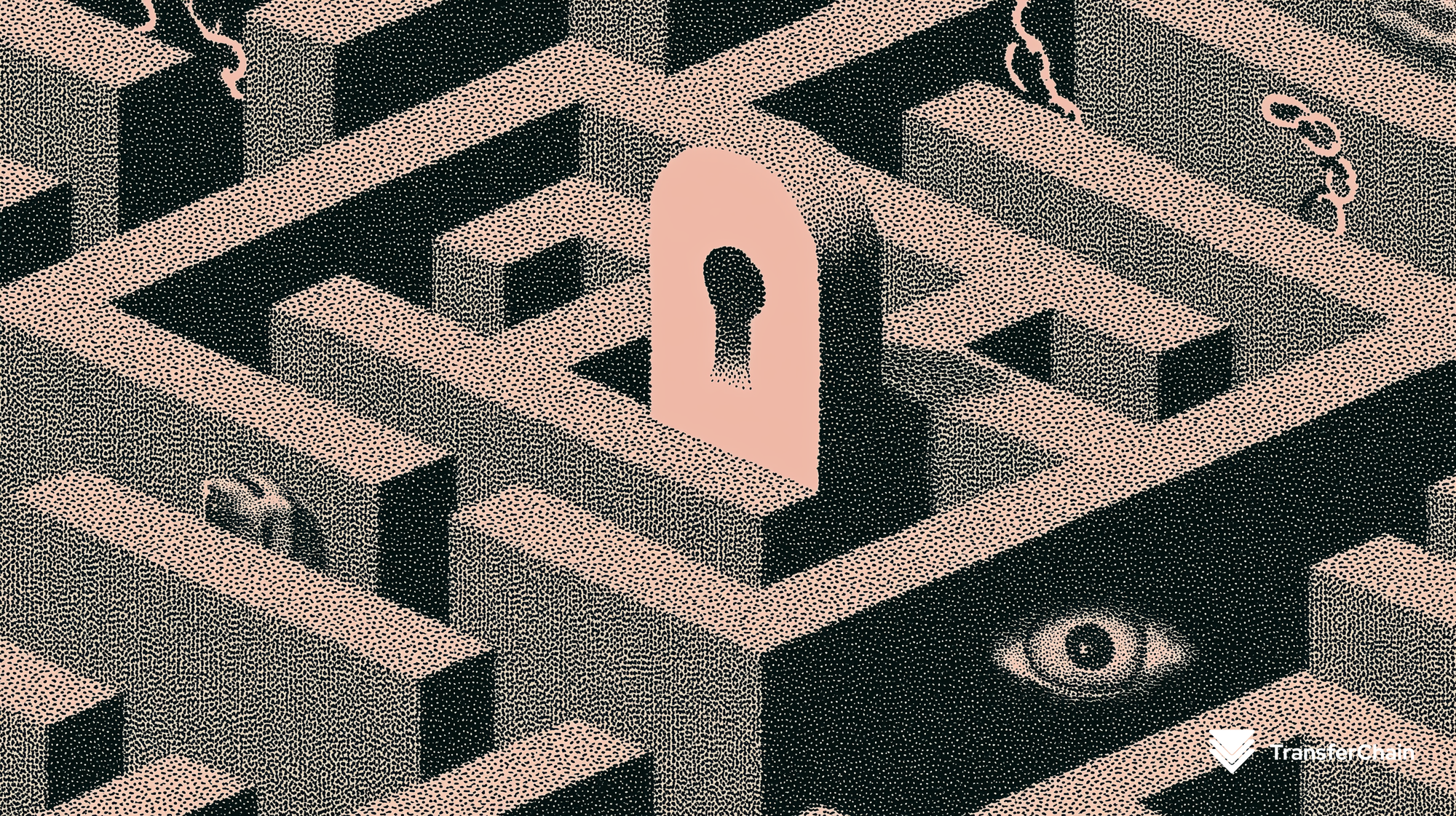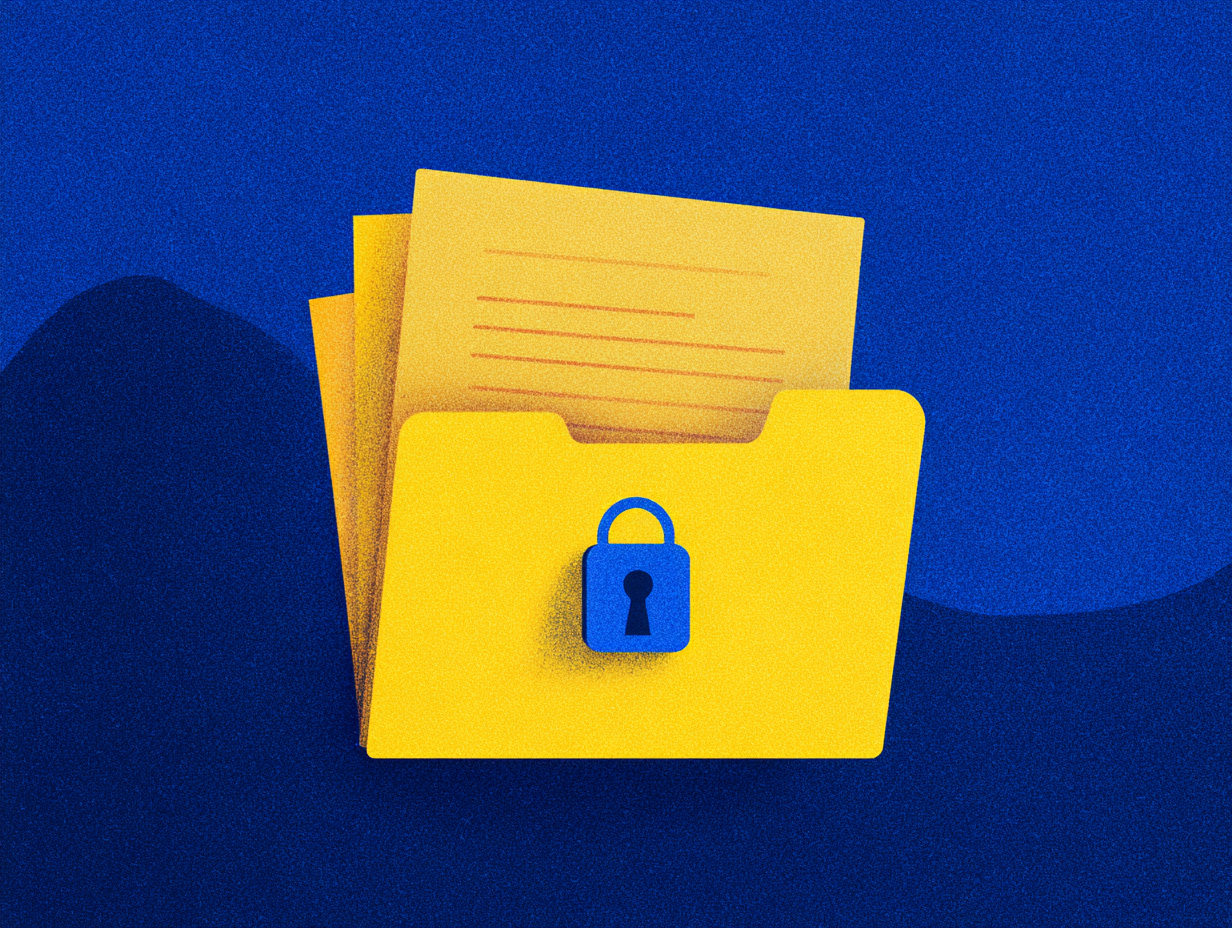
Why TransferChain Uses Blockchain
The Core Motivation: Privacy by Design
TransferChain’s choice of blockchain over centralized servers reflects our unwavering commitment to user privacy and data protection. We neither access nor analyze data passing through our system. Centralized architectures—even encrypted ones—pose inherent risks: custodianship makes providers targets for legal demands, breaches, or misuse. Blockchain eliminates these vulnerabilities at the architectural level, ensuring that no single party can control, track, or fingerprint your data.
Monolithic vs. Modular
When it comes to blockchain architecture, the first decision you need to make is related to the modularity of the design. This decision, comprising two fundamental options, is crucial for determining the basic service capacity of the chain you will implement.
Monolithic Architecture
- Single Layer: Consensus, data availability, settlement, and execution occur on one chain.
- Simple Design: Straightforward initial deployment.
- Limited Scalability: A single layer struggles under heavy load.
- Rigid Structure: Upgrades to one component impact the entire system.
Modular Architecture
Modularity separates blockchain functions into distinct, interoperable layers—execution, consensus, data availability, and settlement—enabling targeted optimization and independent evolution:
- Tailored Scalability
- Each layer scales independently. Parallel data-availability nodes accelerate file transfers without affecting consensus.
- Execution workloads do not throttle settlement finality.
- 2. Selective Upgradability
- Upgrades apply only to the affected layer. Enhancing consensus throughput need not modify file-handling logic.
- New cryptographic or network protocols integrate layer by layer, minimizing service disruption.
- Adaptive Integration of Emerging Technologies
- Zero-knowledge encryption, sharding schemes, or novel consensus mechanisms can be piloted in isolation.
- Layered isolation prevents bugs from cascading across the network.
- Operational Resilience
- Outages in one layer (e.g., data storage) do not disrupt consensus or settlement.
- Maintenance can be scheduled per layer, ensuring continuous uptime.
- Customized Governance and Participation
- TransferChain’s hybrid permissioned model assigns distinct roles to institutions running settlement, execution, or data-availability nodes.
- Incentives and credentials align with each layer’s responsibilities, strengthening overall network security.
Why TransferChain Chooses Modular
From the outset, our priorities were scalability, layer-specific customization, future adaptability, and resilience. A monolithic chain forces trade-offs among these goals. In contrast, our modular design—inspired by the open-source code of Tendermint—delivers unmatched flexibility, performance, and evolutionary potential.
TransferChain specific Implementation Strategy
- Custom BFT Consensus: A unique Byzantine Fault Tolerance variant fine-tuned for file-operation integrity.
- Advanced Leader Selection: An alternative to RR for increased efficiency, security, liveness, and continuity.
- Optimized Block Parameters: A Rapid, reliable and scalable base for file operations.
- Hybrid Permissioned Network: Accredited institutions operate full nodes under a custom-made strict criteria.
Each component deploys incrementally, ensuring continuous service and targeted enhancements.
Network Model: Hybrid Permissioned
Our network balances security with controlled participation. While individual users cannot run nodes, accredited institutions meeting rigorous standards may join as full nodes. This approach fortifies resilience without compromising governance during early stages.

Progressive Decentralization
Absolute decentralization at launch is impractical; networks need maturity. We began as the sole proposer and validator to build chain stability, reputation systems, and participant histories. Over time, our influence shifts to multiple institutional full node operators, creating a truly distributed governance model where no single entity holds sway.
Having established a robust, progressively decentralized governance framework, TransferChain now leverages this resilient infrastructure to enforce practical privacy and security measures at the data layer.
How TransferChain Uses Blockchain
TransferChain utilizes blockchain technology to securely store and manage two critical categories of sensitive information that traditional centralized systems cannot adequately protect: metadata generated from file operations and user authorization rights. By recording these on an immutable, distributed ledger rather than company-controlled servers, we eliminate the privacy risks inherent in centralized data custody. This approach ensures that even under extreme circumstances—security breaches or insider threats—neither TransferChain nor any external party can access, manipulate, or exploit this sensitive information. The blockchain serves as our technological guarantee of privacy, transforming data protection from policy to cryptographic impossibility.
Metadata Integrity and Privacy
What Is Metadata?
Metadata captures the who, what, when, and how of every file operation:
- Participant identities
- Timestamps and sequence of actions
- File sizes, types, and handling details
- Access patterns and frequency
Risks in Centralized Systems
In traditional architectures, metadata resides on provider-controlled servers, exposing it to administrative abuse, legal compulsion, and sophisticated analysis. Even hashed or encrypted logs may be reverse-engineered with auxiliary data.
Blockchain Advantages
- Cryptographic Immutability: Every metadata record is sealed in a tamper-proof chain.
- Decentralized Verification: Consensus-driven validation prevents any single party from altering logs.
- Privacy-Preserving Audits: Participants confirm system integrity without accessing raw metadata.
- No Single Point of Failure: Distributed storage removes centralized breach targets.
- Regulatory Alignment: Immutable audit trails simplify compliance and forensic analysis.
User Authorization Management
What Is User Authorization?
User authorization defines who has permission to access specific files or perform particular actions, enforcing fine-grained access control policies.
Risks in Centralized Systems
Conventional access-control systems store authorization policies and user credentials in centralized databases, exposing them to:
- Insider misuse or privilege escalation
- Unauthorized modifications to access rights
- Legal or covert demands to reveal or alter permissions
- Single points of failure that can lock out legitimate users or expose sensitive files
Blockchain Advantages
- Immutable Access Policies: Authorization rules and credentials are recorded on-chain, preventing unauthorized changes.
- Distributed Enforcement: Network full nodes collectively enforce access decisions, eliminating reliance on a central authority.
- Selective Disclosure via Zero-Knowledge Encryption: Validate permissions without exposing user identities or file details.
- Reduced Attack Surface: Decentralized storage of access policies removes a centralized target for compromise.
- Transparent Governance: Policy changes are visible to authorized participants but cannot be retroactively altered, ensuring accountability.
Technical Benefits
- Robust Security: Eliminates centralized weaknesses—administrative abuse, infrastructure breaches, and insider threats.
- Verifiable Trust: Cryptographic proofs allow independent validation of metadata and authorization policies.
- Future-Proof Flexibility: Modular layers enable integration of advanced privacy techniques, such as zero-knowledge encryption, and compliance-driven upgrades.
Digital Assets
TransferChain issues no tokens or commercial digital assets. We leverage blockchain’s core strengths—immutability, distributed consensus, and cryptographic security—without native currencies. Our platform’s value derives solely from secure, private file operations, not financial instruments.

Blockchain as Privacy Infrastructure
TransferChain’s blockchain-first architecture transcends a mere technical choice—it’s a vow to privacy and secure authorization. By design, we cannot access, alter, or surveil file metadata or authorization rules. Our modular, progressively decentralized network ensures these safeguards strengthen over time, delivering genuine privacy through cryptographic impossibility rather than policy alone. In an era of escalating digital threats, TransferChain sets the new standard: privacy engineered into every layer.
>Disclaimer: To protect our intellectual property, we’ve highlighted some of the core benefits here without revealing every existing and planned feature.


